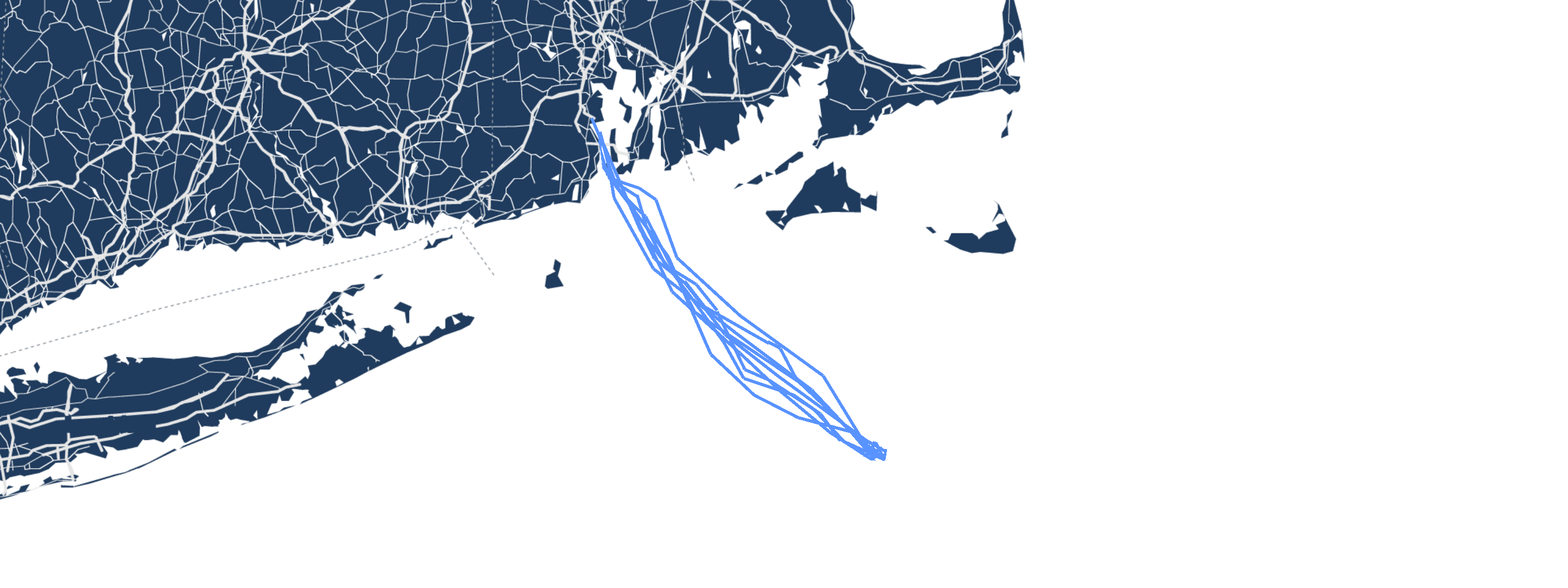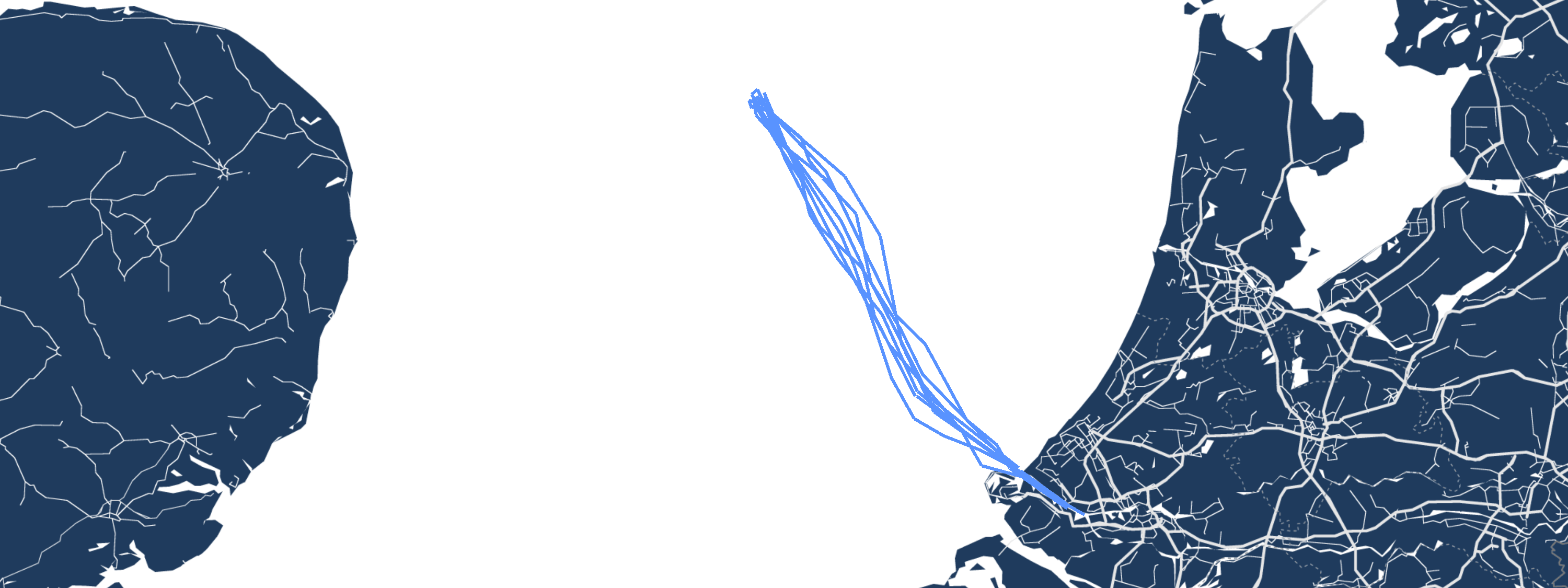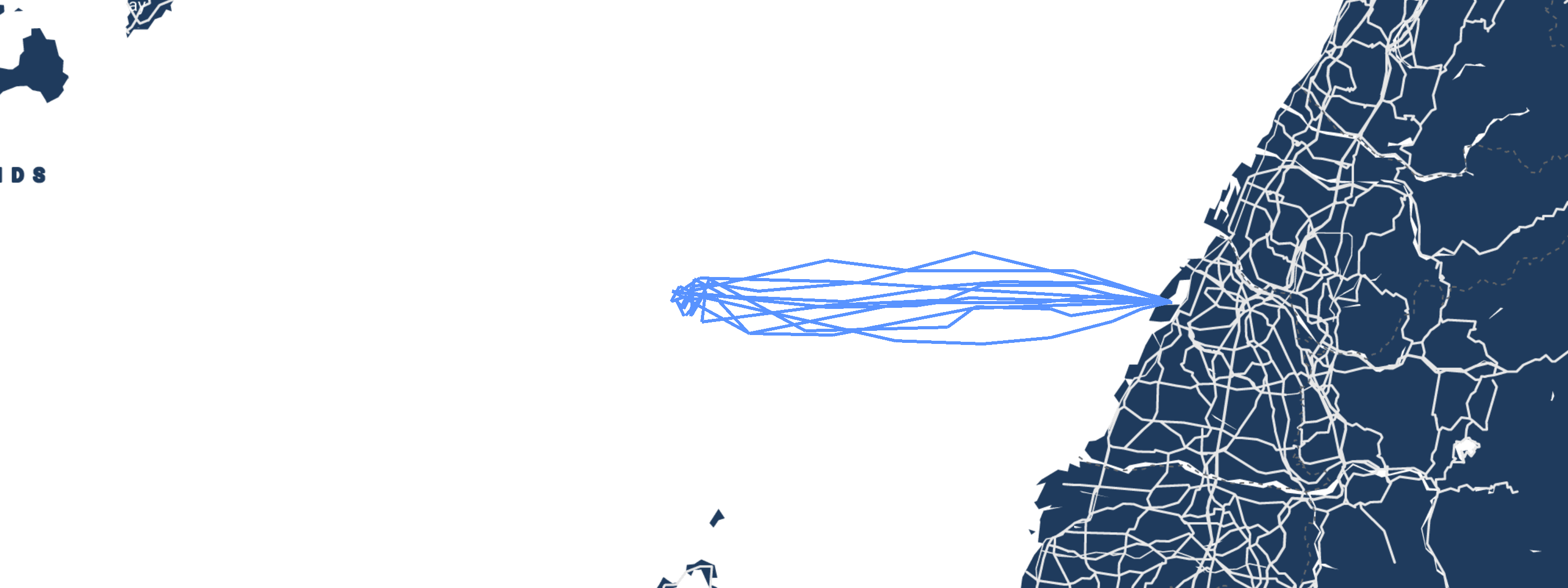Waterway analysis
Select a windfarm from the map
Windfarm site A:
Vineyard / Rhode island
Windfarm site B:
IJmuiden Ver
Windfarm site C:
Jia Neng (Can Wind)

AIS data point 1
Speed: 0 knots
Situation: In port, loading
Current: --
Waves: 0.2m S
Wind: 5kn N
Power Usage: Low
AIS data point 2
Speed: 11 knots
Situation: Transit, loaded
Current: ++
Waves: 0.8m SE
Wind: 8kn W
Power Usage: High
AIS data point 4
Speed: 1 knots
Situation: Dynamic positioning
Current: --
Waves: 0.7m SE
Wind: 6kn NW
Power Usage: Medium
AIS data point 3
Speed: 14 knots
Situation: Sailing, empty
Current: +
Waves: 0.6m SE
Wind: 8kn NW
Power Usage: Medium

AIS data point 4
Speed: 0 knots
Situation: In port, loading
Current: --
Waves: 0.2m W
Wind: 11kn S
Power Usage: Low
AIS data point 3
Speed: 15 knots
Situation: Sailing, empty
Current: +
Waves: 1.2m W
Wind: 18kn SW
Power Usage: Medium
AIS data point 2
Speed: 12 knots
Situation: Transit, loaded
Current: +
Waves: 1.3m W
Wind: 18kn SW
Power Usage: High
AIS data point 1
Speed: 0 knots
Situation: Dynamic positioning
Current: +
Waves: 1.3m W
Wind: 19kn SW
Power Usage: Medium

AIS data point 1
Speed: 0 knots
Situation: In port, loading
Current: --
Waves: 0.1m NE
Wind: 5kn SW
Power Usage: Low
AIS data point 2
Speed: 10 knots
Situation: Transit, loaded
Current: +
Waves: 0.8m NE
Wind: 8kn SW
Power Usage: High
AIS data point 4
Speed: 0 knots
Situation: Dynamic positioning
Current: +
Waves: 0.7m NE
Wind: 6kn SW
Power Usage: Medium
AIS data point 3
Speed: 13 knots
Situation: Sailing, empty
Current: +
Waves: 0.6m NE
Wind: 8kn W
Power Usage: Medium
